HSBC HK Business Go
Execution of design discovery sprint
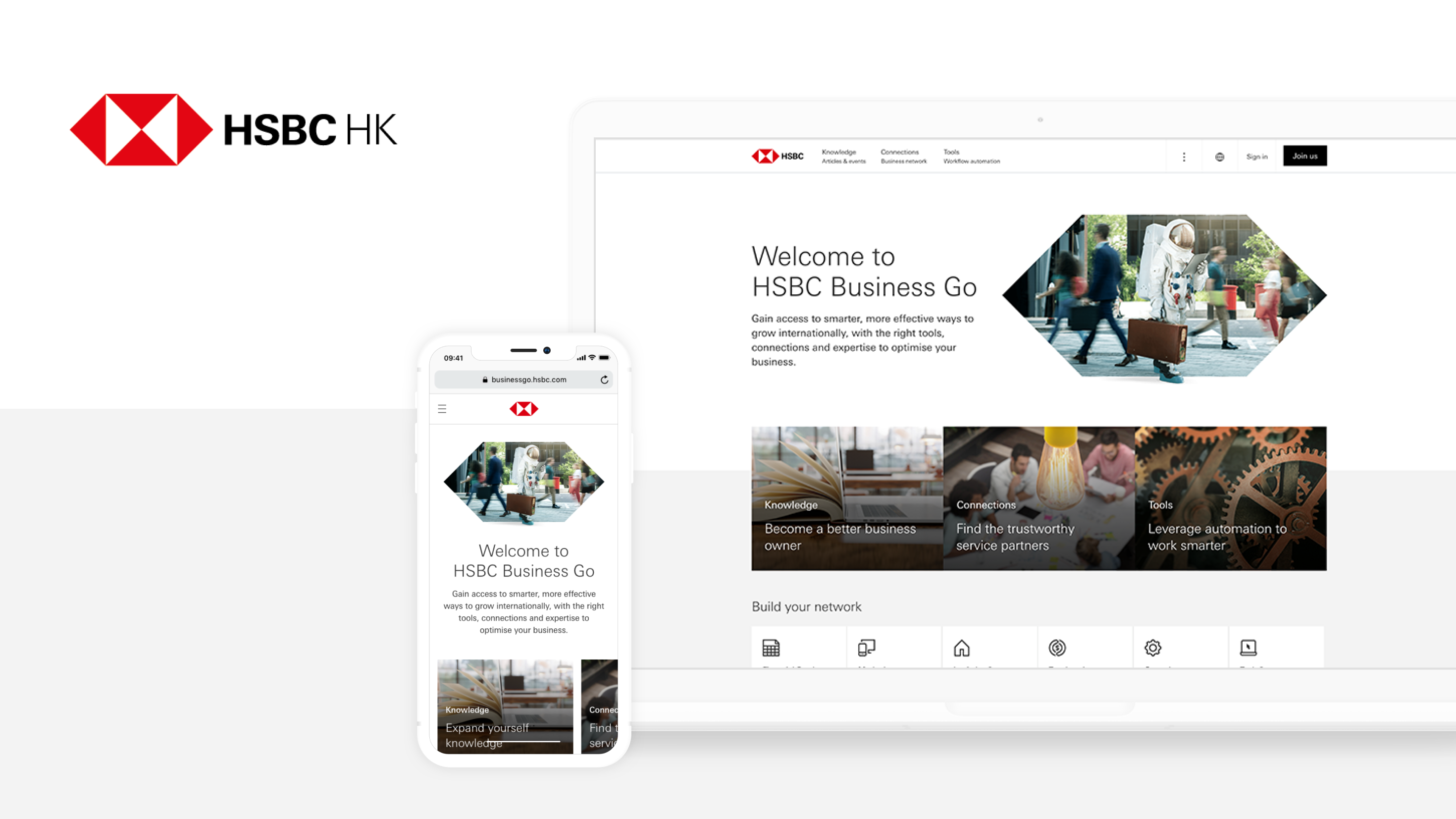
To comply with my non-disclosure agreement, I have omitted and obfuscated confidential information in this case study. All information in this case study is my own and does not necessarily reflect the views of HSBC HK.
Project Structure
Client project (Banking)
Sep 2022 – Dec 2022
- Responsible for one of the pillars, Connection
- Go through the design thinking process with the stakeholders
- Prepare design artifacts for development at the same time
Background
Business Go is an evolution of Vision Go for customers worldwide. In this project, we may move our focus to the design discovery sprint, which is a new working progress for the team to discover design opportunities via the design thinking process. Designers work closely with POs and real customers in this discovery sprint and regularly report to all the stakeholders (including developers, QAs, scrums masters).
Besides, the discovery sprints are additional sprints that run with regular development sprints at the same time.
Discovery Sprint
Discovery sprint aims to find design opportunities to enhance the product's user experience. This discovery working model is advocated by Teresa Torres [Continuous Discovery Habits]. The process includes building an opportunity tree via a user journey map, selecting a focus area by the impacts on customers, conducting market research to build assumptions, discovering user's behavior and pains via interviews, analyzing the data we collected, and making a conclusion of whether develop it or not.
Discovery sprint is an additional 2-week sprint that works together with a 2-week development sprint. It emphasizes understanding the user’s behavior and pains more than the ideation part.
Example

I was mainly responsible for one of the pillars, Connection. Connection aims to link up SMEs and service providers. Customers can find service providers by the service types and check their information. After that, customers can get a quote or further contact the service provider. We have already built the opportunity tree according to the user journey map we got in previous proposition tests.
Here is one example of how the discovery sprint works.
Pick an opportunity to discover
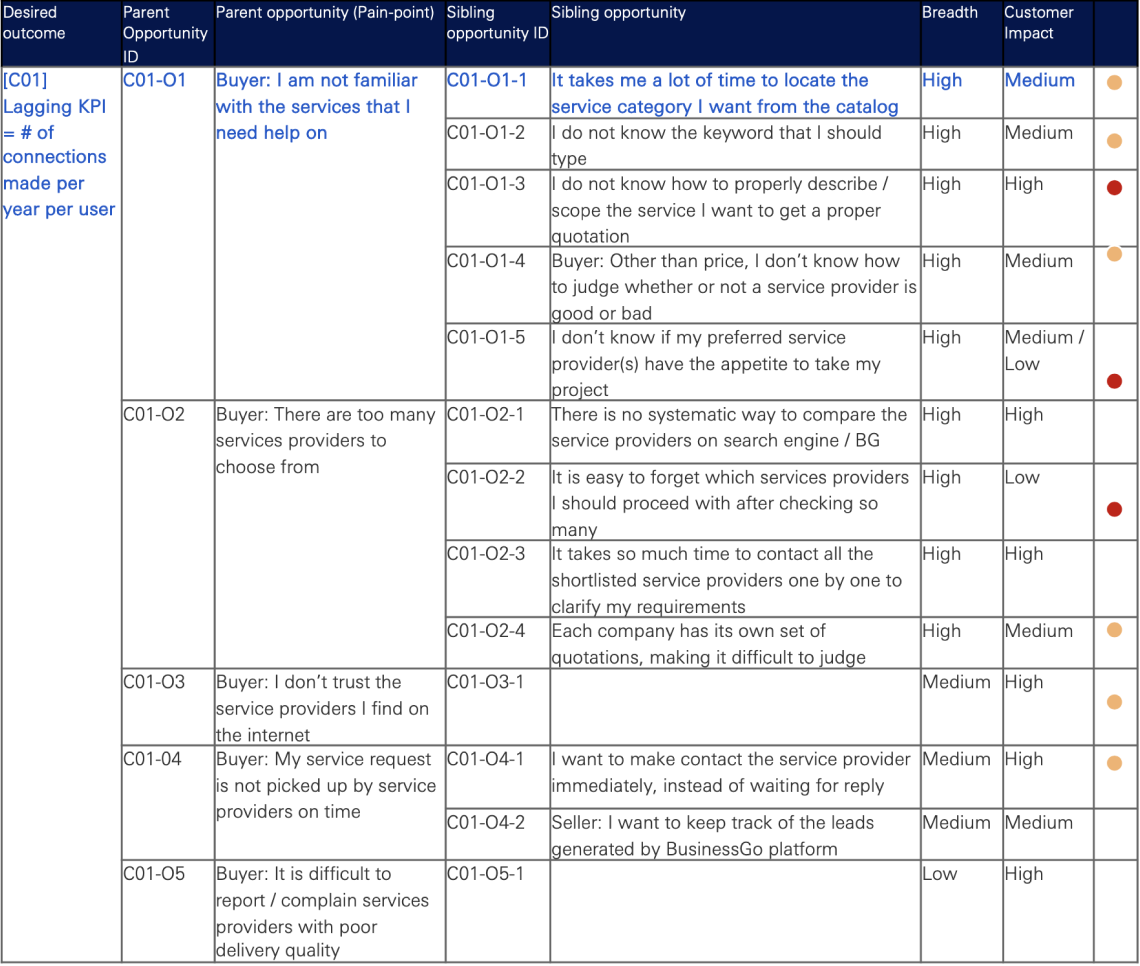
To start the discovery sprint, we have to pick one opportunity from the opportunity tree as a theme to explore. According to the user journey map and their pains, we will choose a topic that greatly impacts customers and may cause higher satisfaction.
- In this sprint, we will dig deeper into why it takes a lot of time for the customer to locate a service from the catalog
Make hypotheses & assumptions
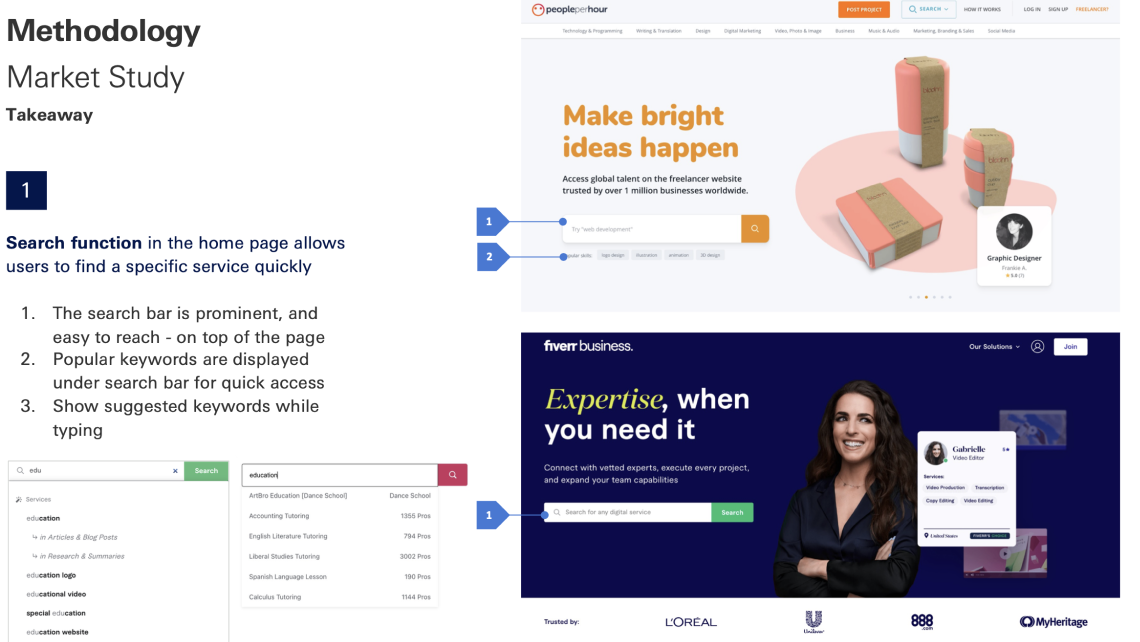

Based on the pain points mentioned in the user journey, we will do market research on existing solutions and flows to have an initial idea of what the problems are and what the possible solutions are. Then, we will list out the hypotheses and assumptions for later testing.
- One of the hypotheses here is customers are not familiar with the services they need, so they spend time locating a targeted service from the catalog. Therefore, we assume a search bar can speed up these search processes, which we can validate in the interviews.
Customer interviews
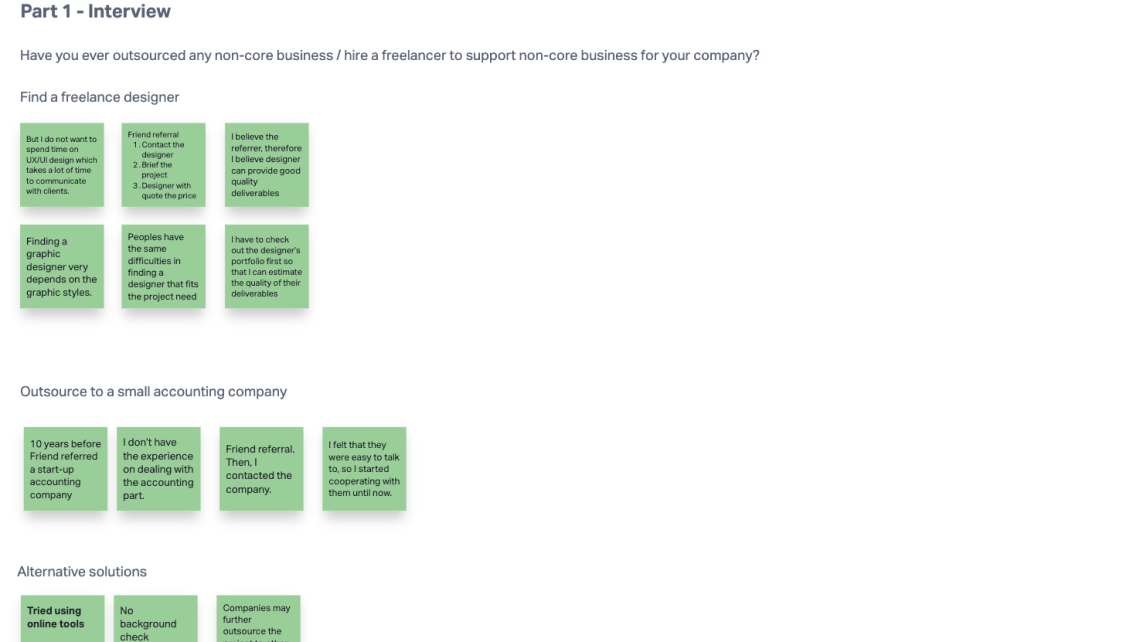
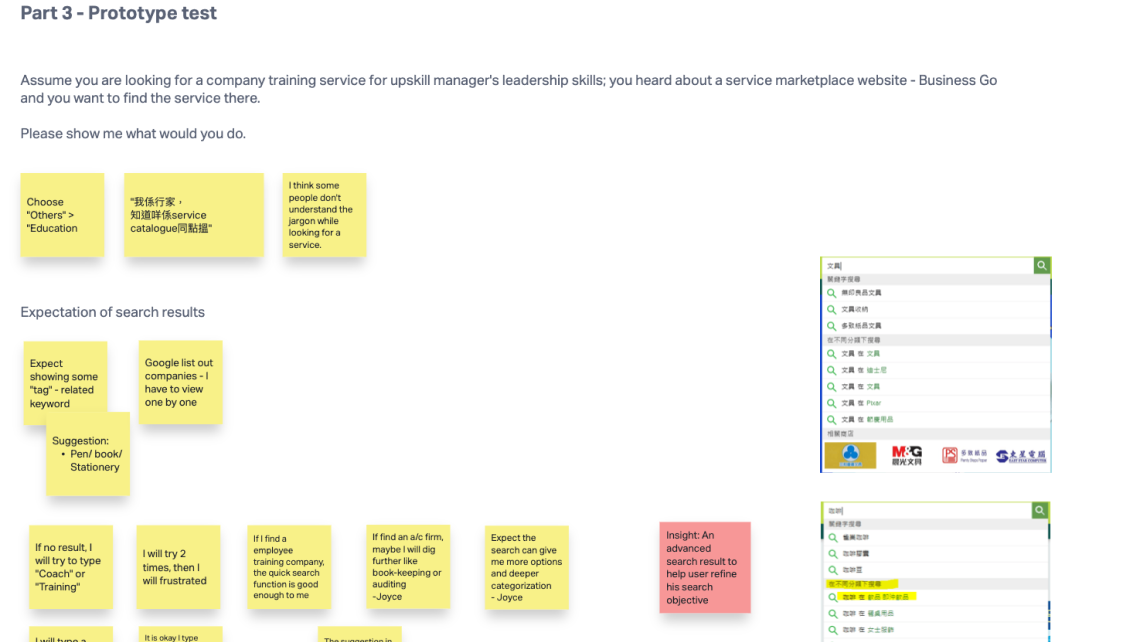
Based on the assumptions, we draft a list of questions for the interviews. Besides, we try to keep asking WHY questions to deeply understand customers’ behaviors and their way of solving problems.
- During the interviews, we know they have to spend time researching the exact service keywords they need because they are new to that area.
Insights

We gather the interview data and analyze it using affinity mapping to get insights.
- Users intuitively use the search function when they have a clear understanding of what they need
- They still need to spend a lot of time researching the new services they needed
Conclusion of the sprint
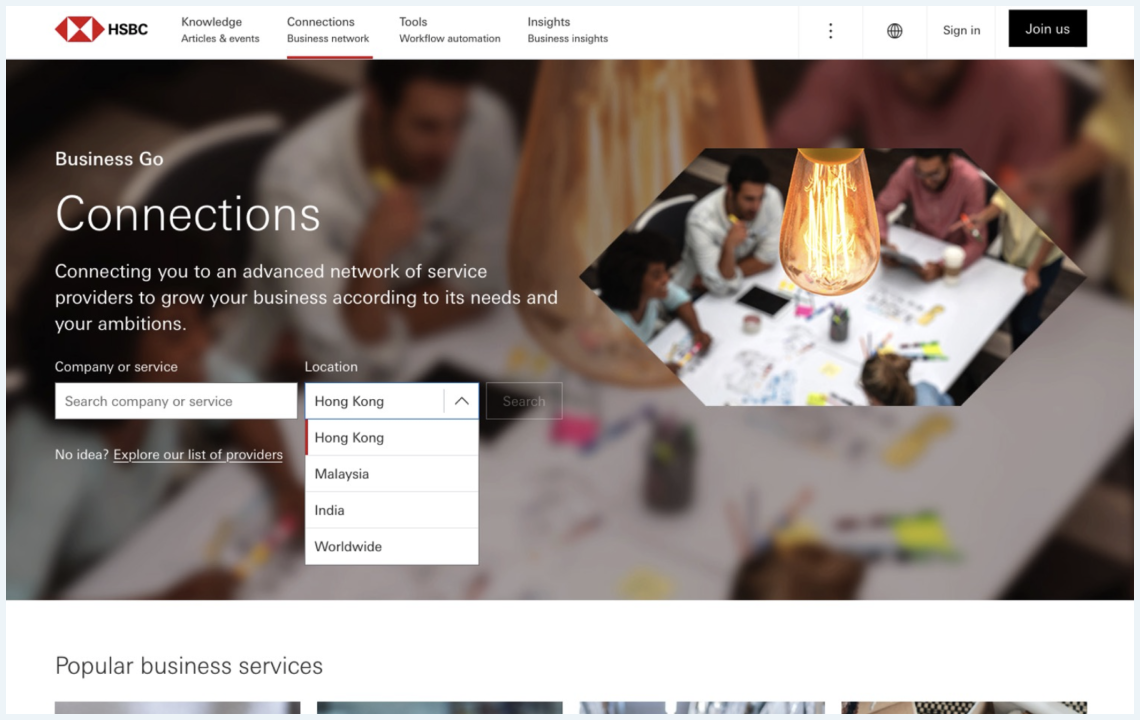
We will conclude whether to further develop the opportunity or not based on the technical efforts and the value to customers. Also, to decide the next direction for the next discovery sprint.
- A search bar is not an urgent need to help customers find a service provider because it requires customers to know the exact service name. This will be put into the backlog.
- It is worth exploring how to reduce the research effort to speed up the process of locating the service in the next discovery sprint.
Reflections
Work on design thinking process with different stakeholders
To gain valuable insights from the interviews, we have to ask meaningful questions in limited interview time. It is a new challenge to make sure all of us are targeting a unique goal and have a clear mind about what we need. Besides, it is a good lesson to learn how to guide customers in describing their behaviors in detail and the behind meanings without exposing our intention.